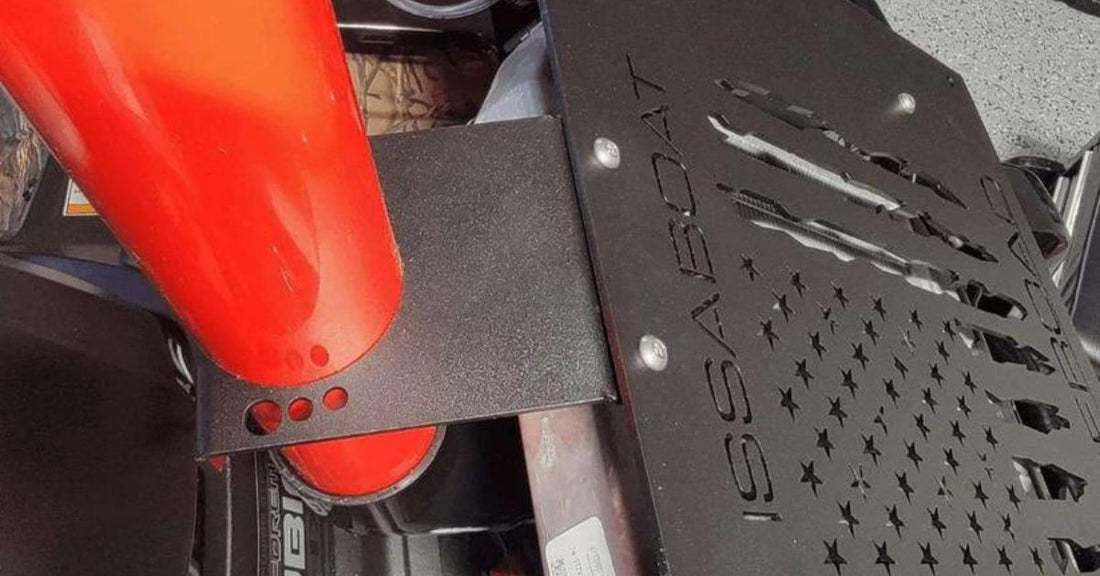A snorkel kit on your ATV can open a world of off-roading possibilities, allowing you to traverse water-logged trails that would otherwise be off-limits. Installing the kit elevates the air intake so your ATV can draw in clean air and water won’t enter the engine. Use these tips for installing a snorkel kit on your ATV to enjoy new capabilities on muddy trails and water crossings.
Check Compatibility
Before you buy a snorkel kit, ensure it’s compatible with your ATV. Different models have unique configurations, so a kit designed for one model may not fit another. Be sure to check the snorkel kit manufacturer’s guidelines to see if your preferred kit will work with your ATV model.
Installing an incompatible snorkel kit can lead to a range of problems, from improper fitting to compromised engine performance. These issues can not only negate the benefits of the snorkel but may also cause damage to your ATV. Always double-check compatibility to save time and prevent unnecessary headaches during installation.
Gather the Necessary Tools
Having all the right tools on hand before you start your installation will save you time and effort. You might need common tools like screwdrivers, wrenches, pliers, and possibly a drill with various bits. Additionally, gathering materials like silicone sealant and extra clamps can set you up for success.
When it comes to a DIY project, there are few things more frustrating than getting into the thick of the installation only to realize you’re missing a crucial tool. Those interruptions can really disrupt your focus and lead to mistakes that could affect the quality of the installation. By rounding up everything you’ll need ahead of time, you can make the installation process smooth, efficient, and hassle-free.
Pro Tip: Get a Kit That Includes All Installation Hardware
Get a jump start on your project by choosing an ATV snorkel kit that includes all the necessary installation hardware. By having everything you need in one package, you reduce the chances of missing components and save time on additional trips to the store. A well-designed, comprehensive kit gives you a quality setup that ensures a seamless fit and optimal performance for your ATV.

Follow Instructions Carefully
When installing a snorkel kit or any other modification on your ATV, you must follow the manufacturer’s instructions closely to ensure a secure fit. Step-by-step instructions ensure the correct placement of every part. Skipping steps or improvising might save you time in the short run, but it can lead to subpar results or even ATV damage down the line.
Remember, each snorkel kit is unique and has its own set of requirements. Even if you’ve tackled similar projects before, be sure to check the specific instructions for your kit. Correct installation ensures that the snorkel performs optimally and reduces the risk of water ingress into the engine.
Seal All Connections
Using silicone or other recommended sealants creates a watertight seal that prevents water from entering the air intake system, which is the primary function of the snorkel. Follow the manufacturer’s instructions to apply the sealant generously at all connection points to safeguard against leaks.
Even a small gap or minor leak can lead to engine damage. Regularly check these seals and reapply sealant if necessary to keep your snorkel in top condition.
Kit Components That Block Water Infiltration
Snorkel kits come equipped with essential components designed to prevent water infiltration and protect your ATV’s engine. For example, the airbox lid seal effectively blocks water from entering the airbox, safeguarding the engine from moisture damage. Additionally, the exhaust plug seals the exhaust outlet, ensuring that water does not enter the exhaust system during deep water crossings.

Test the Installation
Before you hit the water, it’s wise to conduct a dry run of your snorkel installation to check for air leaks. This involves running the engine and inspecting the snorkel system for any signs of air leakage. One handy technique is to apply soapy water around the connections—if you see bubbles, there is a leak.
Testing the installation ensures that all components are correctly fitted and sealed, giving you confidence in the snorkel’s performance. Figuring out any issues in a controlled environment is far safer than encountering problems while out on the trail.
Quality Snorkel Kits Deliver the Best Results
One of the advantages of buying a snorkel kit from a reputable supplier is knowing that you are receiving a quality product. These systems undergo rigorous testing to meet performance standards. Construction quality, straightforward installation instructions, and compatibility with your ATV all contribute to the system’s reliability.
Perform Regular Maintenance Checks
To keep your ATV’s snorkel kit performing at its best, you’ll want to inspect it regularly for any signs of wear or damage. Over time, seals can degrade, and tubing can experience wear due to exposure to the elements and rough terrain. Regular checks help you catch and fix issues before they turn into serious problems, like engine damage from water intrusion or reduced performance due to blocked airflow and compromised seals.
Keeping your snorkel system in top condition means your ATV will be ready whenever you need it. Schedule regular inspections as part of your maintenance routine to extend the life of your ATV’s snorkel kit and maintain optimal performance.
As part of your inspection routine, check the following snorkel system parts for damage:
- Hoses and tubing: Inspect these parts for cracks, abrasions, or any signs of wear that could compromise performance.
- Seals and gaskets: Check all seals for signs of deterioration or moisture penetration, ensuring they remain intact to prevent water intrusion.
- Connections and fittings: Ensure that all connections are secure and free of debris and look for any signs of leakage or looseness.
- Riser support and mounting: Verify that the riser support is secure and that the rubber boot is undamaged, providing the necessary stability and flexibility.
- Vent lines: Check that all vent lines are clear and unobstructed, allowing for smooth airflow and pressure equalization.
- Overall cleanliness: Maintain a clean snorkel system by removing mud or debris that could cause blockages or airflow restrictions.
To elevate your ATV’s capabilities in watery environments, add a snorkel kit that’s compatible with your model. Follow the manufacturer’s instructions and check the components periodically to prevent water infiltration and ensure the system operates smoothly. With an all-inclusive kit, you can customize your quad faster and more easily with a snorkel system that fits perfectly. Follow the provided instructions to protect your ATV’s engine and enjoy more time on the trails.

